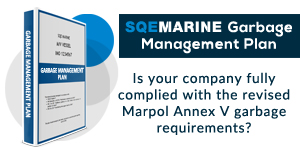Correct packing, cargo labelling and weighing, accurate declaration of goods by cargo interests; all of these activities have a direct bearing on the safety of boxships. With the growing size of container vessels, misdeclaration of cargo together with insufficient firefighting capabilities are currently two of the main challenges related to container ship safety.
Carriage of dangerous goods
Containers may contain a wide range of hazardous and toxic substances. An analysis from the Cargo Incident Notification System (CINS) shows that in just over a quarter of the incidents where causation was detected were attributable to cargo being mis declared. This may lead to insufficient handling of the container, and worst case an incorrect firefighting strategy that may increase the danger of combustion of the goods in the container.
While many good initiatives are now underway to ensure the safe transport of dangerous cargoes along the container supply chain, much more still needs to be done to raise awareness of the risks, enforce the rules, simplify guidance documents and ensure better dissemination of good practice from first to last mile.
The dangerous goods (DG) now make up an estimated 10-12% of global container trade – accounting for potentially up to 6 million or more shipments per annum.
Remarkable developments
- 2008: The International Chamber of Shipping (ICS) and the World Shipping Council (WSC), published ‘Safe Transport of Containers by Sea: Guidelines on Industry Best Practices’.
- 2013: the MSC approved new requirements for fire protection of on-deck cargo areas. The amended SOLAS regulation II-2/10 requirements only apply to new vessels constructed on or after 1 January 2016. In addition to all other fire protection arrangements as per existing regulations, vessels designed to carry five or more tiers of containers on or above the weather deck shall from then on also be provided with mobile water monitors and at least one water mist lance.
- 2014: IMO/ILO/UNECE Code of Practice for Packing of Cargo Transport Units (CTU Code), jointly developed by the International Maritime Organization (IMO), the International Labour Organization (ILO) and the United Nations Economic Commission for Europe (UNECE), to address concerns through a non-mandatory global code of practice for the handling and packing of cargo transport units for transportation by sea and land.
- 2016: Entry into force of amended FSS Code & SOLAS regulation II-2/10
Actions to be taken by industry stakeholders
- Support internationally harmonized legislation and national regulations based on the CTU Code.
- Stick to the measures which ensure the structural safety of large container ships.
- Spread awareness on firefighting measures and support them in discussions with other interested parties and class.
Relevant documents and links
- ClassNK Investigation Report on Structural Safety of Large Container Ships, 30 September 2014.
- IACS, Sub-working group on structural safety of large container ships: Unified Requirements that set out minimum scope for hull girder strength analysis; UR S11A and UR S34, adopted 1 June 2015.
- S. Coast Guard: Marine Safety Information Bulletin 009/16: U.S. Declares an Equivalency to Regulation VI/2 of SOLAS, 28 April 2016.
- ABS: Fighting Fire on Container Ships, 2016.
- Cefor: Technical Forum memo 5 – Ultra Large Container Vessels, 13 March 2017.





Comments
Post a Comment